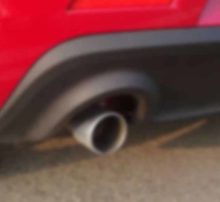 Light-duty diesel vehicles emit on the road substantially more nitrogen oxides (NOX) than permitted by regulatory emissions standards. With regard to the European air quality targets, the European Commission addresses this problem by developing a complementary emissions test procedure to be applied for the type approval and in-service conformity testing of all lightduty vehicles.
Light-duty diesel vehicles emit on the road substantially more nitrogen oxides (NOX) than permitted by regulatory emissions standards. With regard to the European air quality targets, the European Commission addresses this problem by developing a complementary emissions test procedure to be applied for the type approval and in-service conformity testing of all lightduty vehicles.
The procedure is to be gradually implemented from 2014 onward and should limit NOX and other pollutant emissions over a wide range of normal operating conditions. To
facilitate the technical development, the European Commission established in January 2011 the Real-Driving Emissions – Light-Duty Vehicles (RDE-LDV) working group that is open to stakeholders. Up to June 2012, the RDE-LDV working group carried out a technical assessment of candidate procedures. As the result of an initial screening process, two
procedures were assessed in detail: (i) emissions testing with random driving cycles in the laboratory and (ii) on-road emissions testing with Portable Emissions Measurement Systems
(PEMS). This report presents the results of the assessment.
Both candidate procedures are technically feasible. However, PEMS on-road testing may be more effective than random-cycle testing in limiting the pollutant emissions of light-duty
vehicles because it (i) allows a wider range of driving conditions to be covered and (ii) appears to be more effective in preventing the detection of emissions tests by vehicles and
thus the use of defeat strategies under normal conditions of vehicle use. These two aspects are considered key priorities by the European Commission. PEMS on-road testing faces,
however, practical challenges, including open safety issues, the currently limited availability of PEMS equipment, and potential climatic, geographical, and seasonal constraints for the
execution of emissions tests. Random-cycle testing presents advantages over PEMS on-road testing in that it allows established laboratory equipment and know-how to be used.
The present assessment is subject to uncertainty because the implementation and running costs as well as the overall effectiveness of the two candidate procedures depend on
the definition of concrete boundary conditions (e.g., permitted test temperatures, severity of driving patterns). These definitions are not yet agreed. Accounting for the resulting
uncertainty, it has been decided that the JRC will develop a PEMS-based test procedure by the end of 2013. Vehicle manufacturers are given the opportunity to develop a random cyclebased test procedure in the same time period.
A decision will be made regarding implementation for type approval and in-service conformity testing based on a comparison of the two fully developed procedures. The European Commission will ultimately support the adoption of the RDE-LDV test procedure as a complementary and globally-harmonized test procedure in the second phase of the WLTP process…https://ec.europa.eu





























